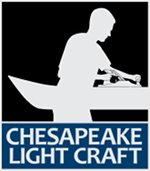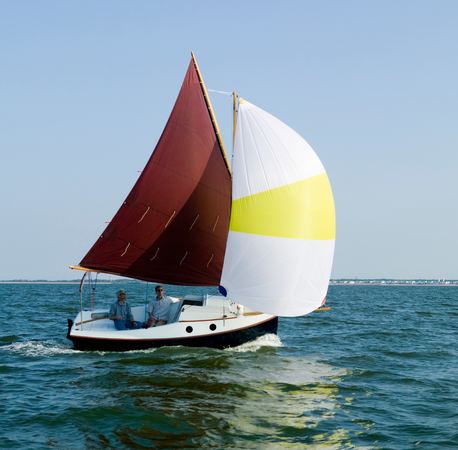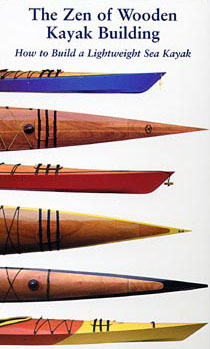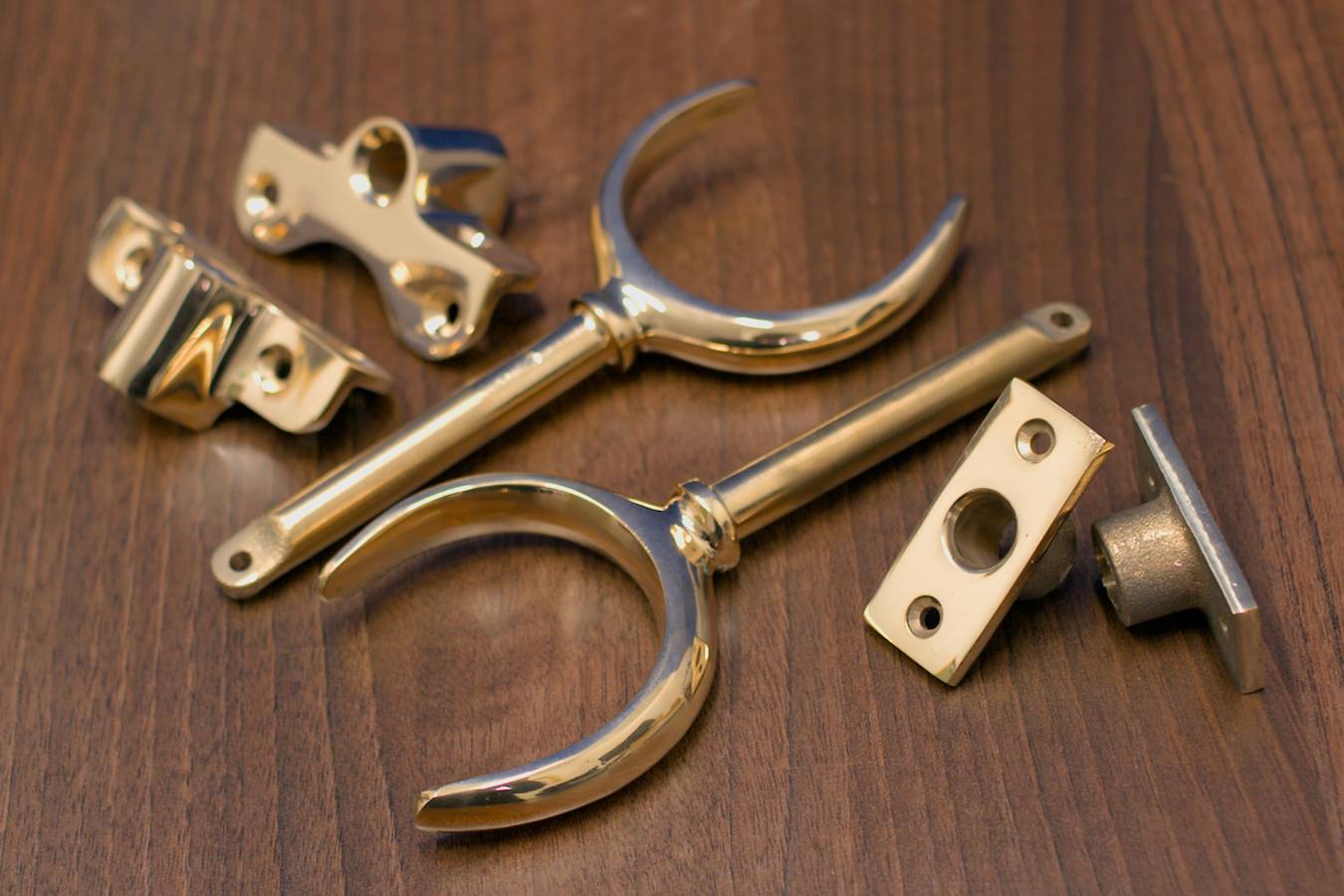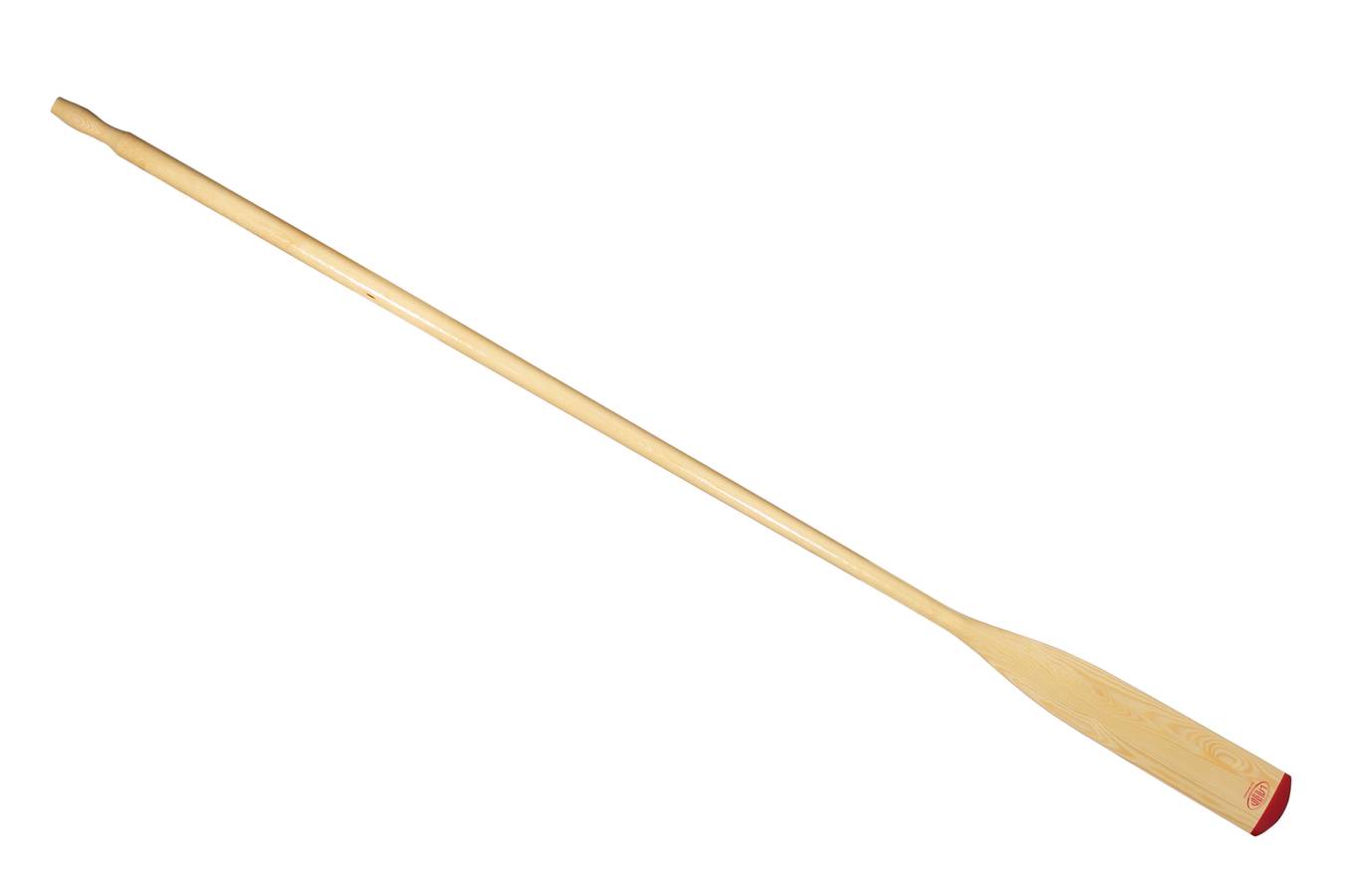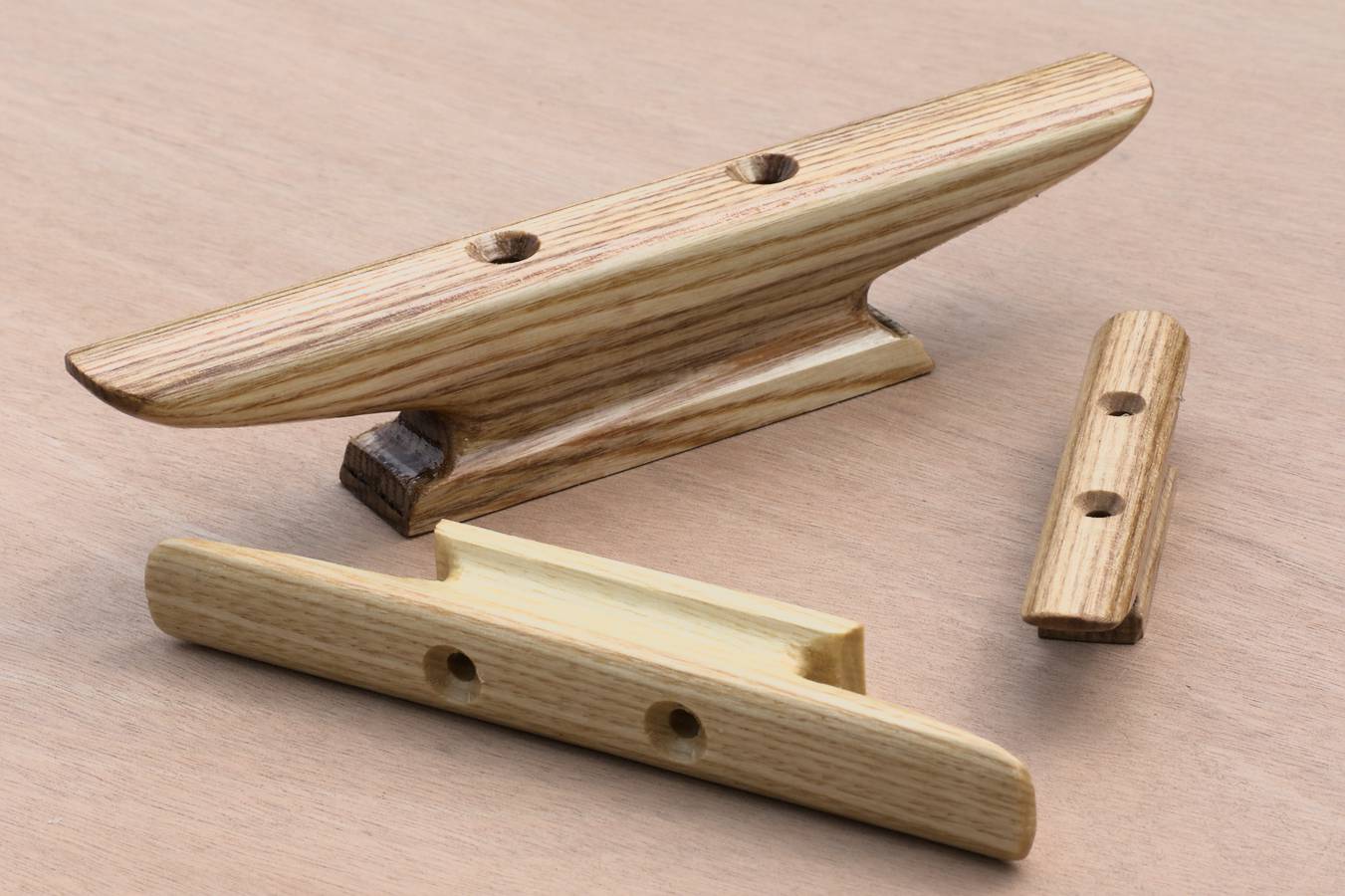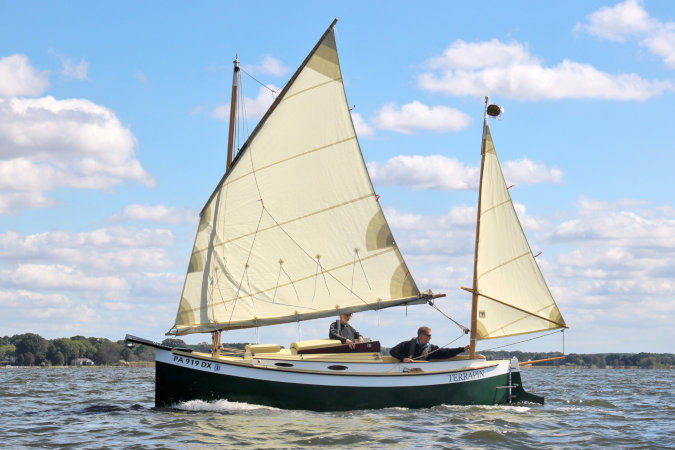

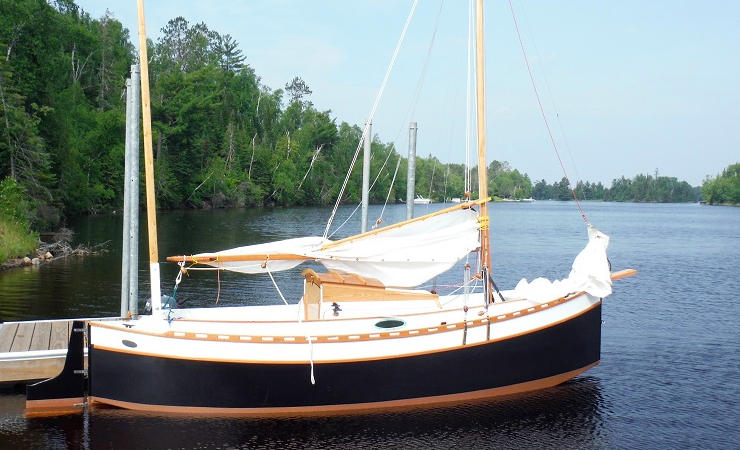
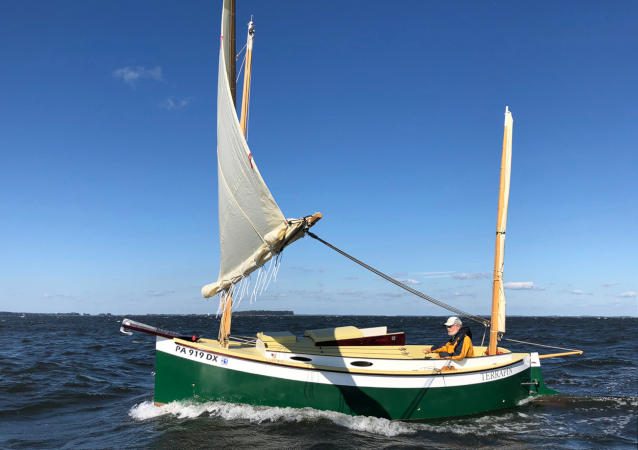
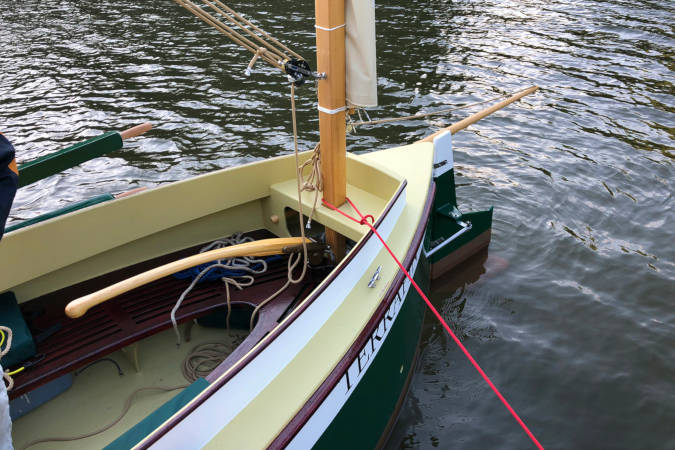
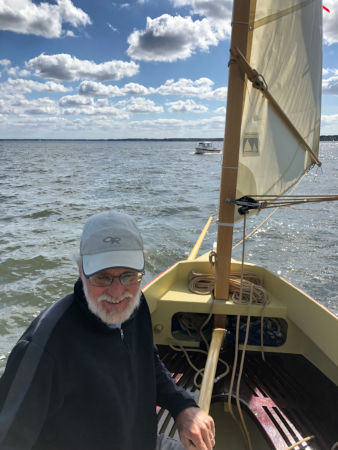






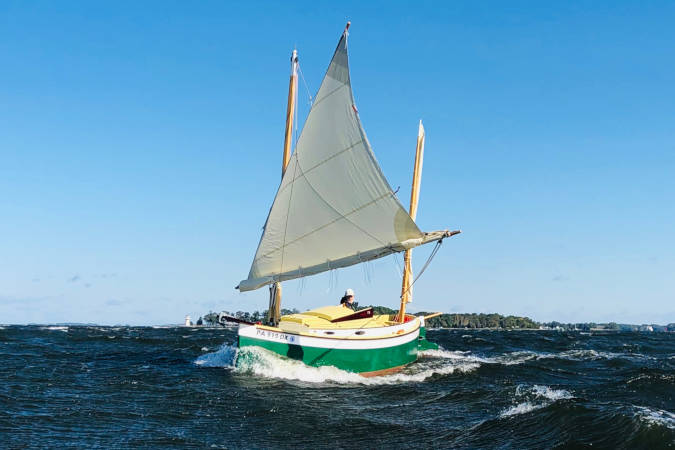
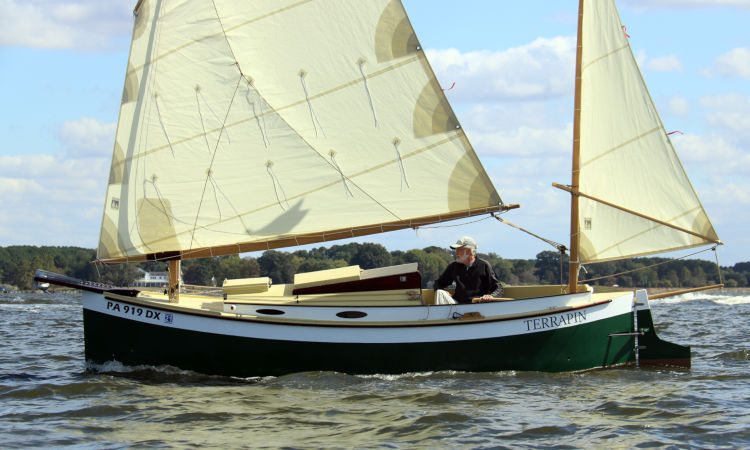
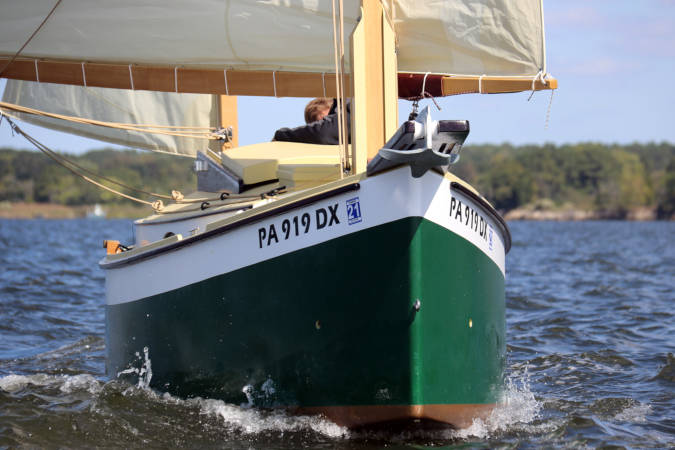
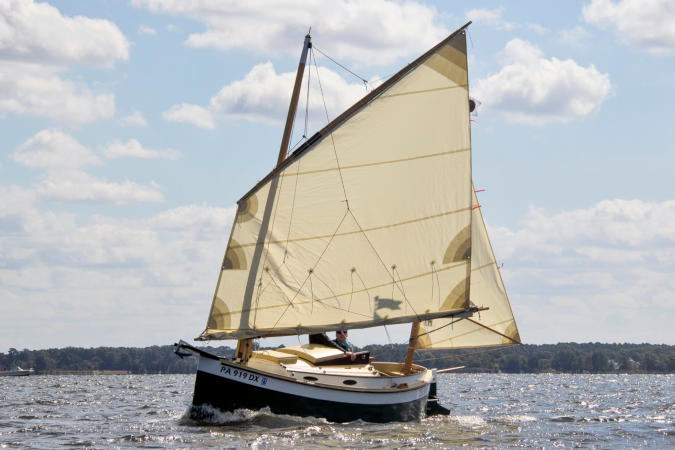
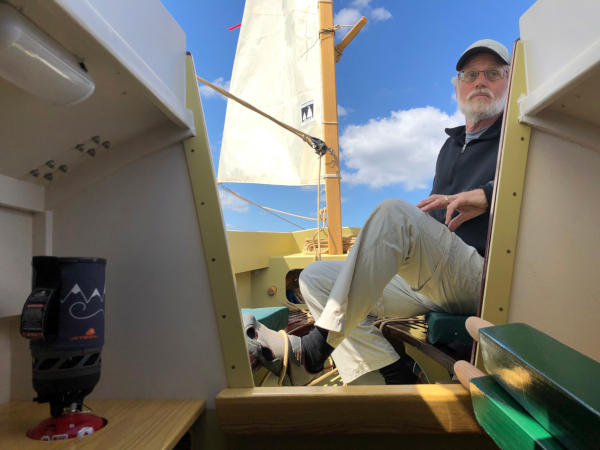
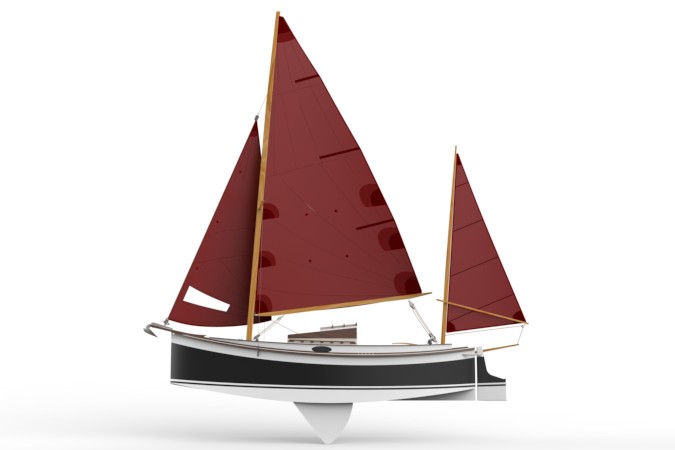
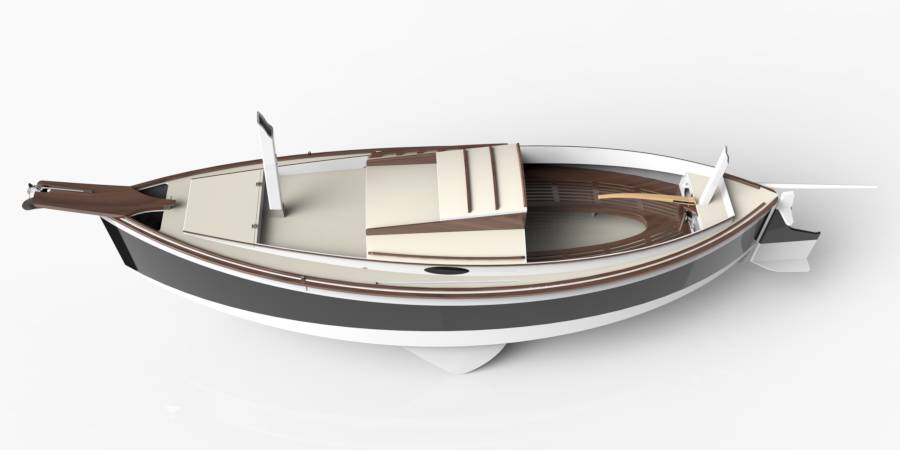
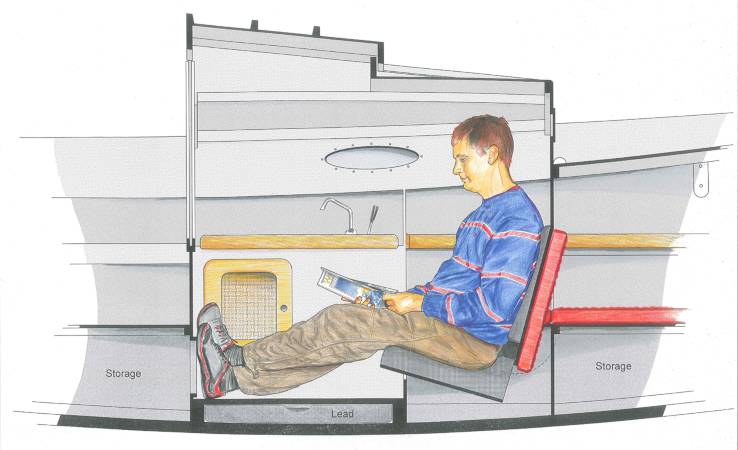

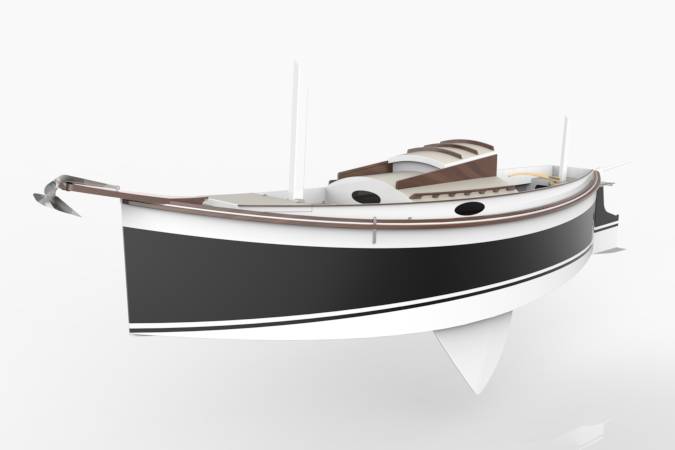
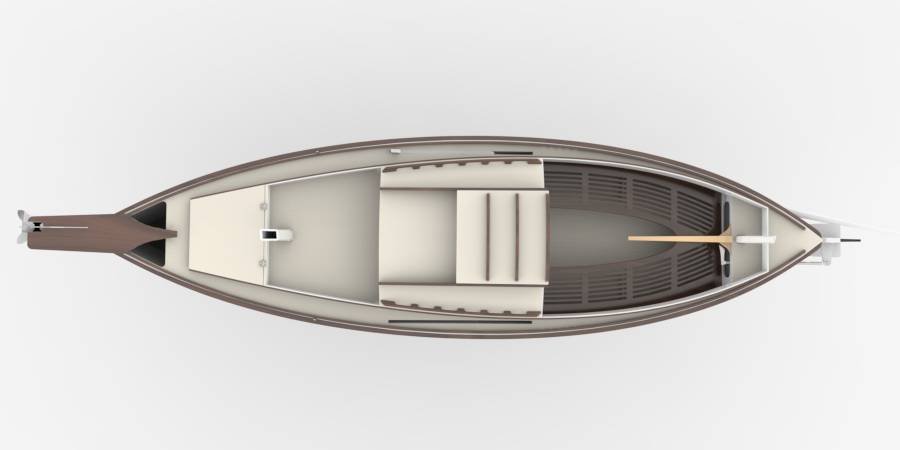
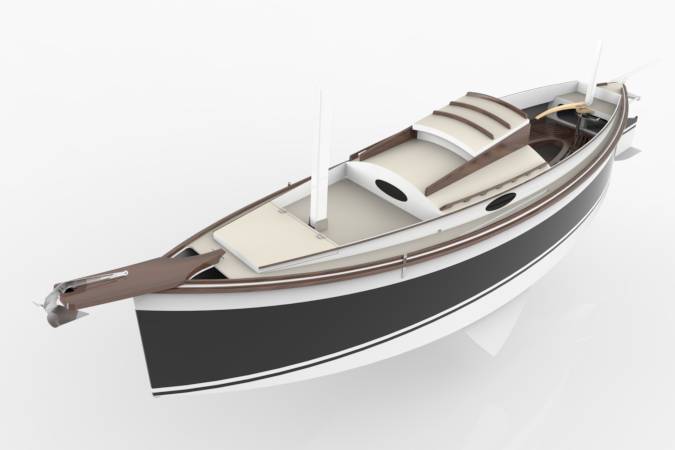
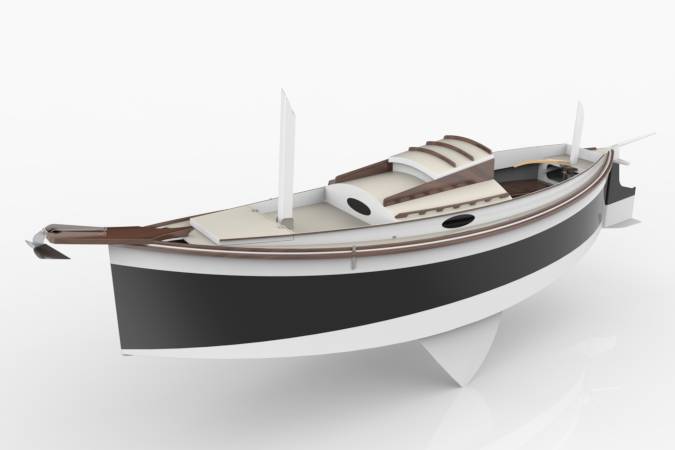
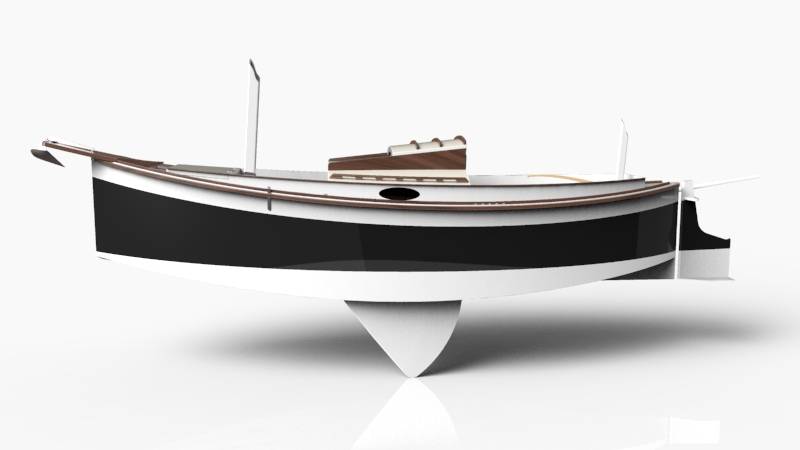
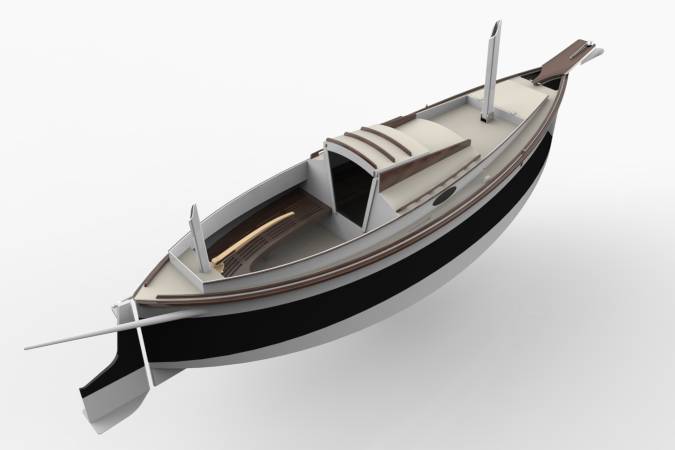
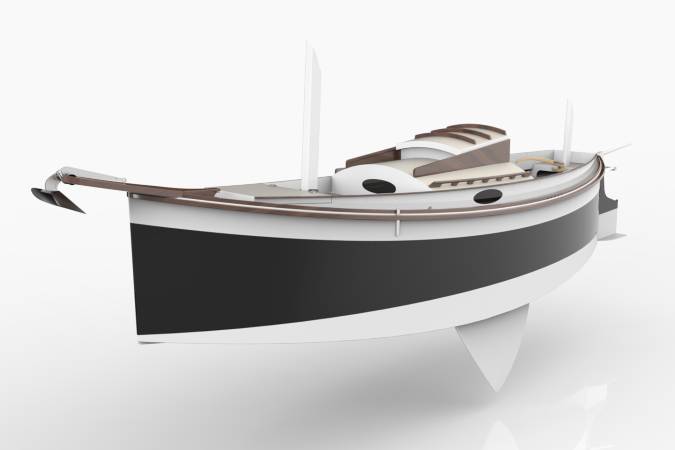
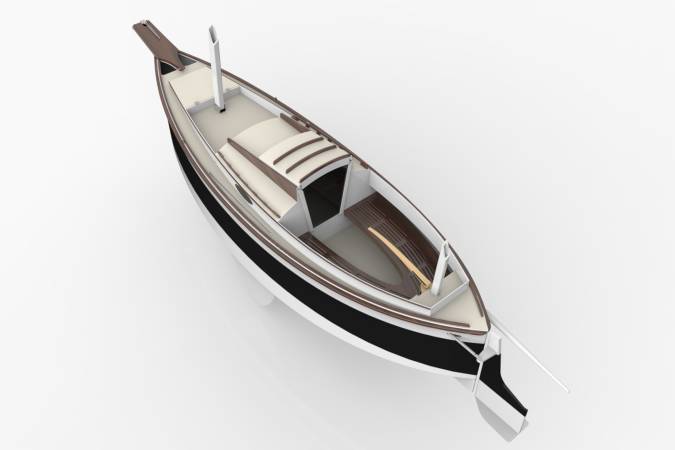
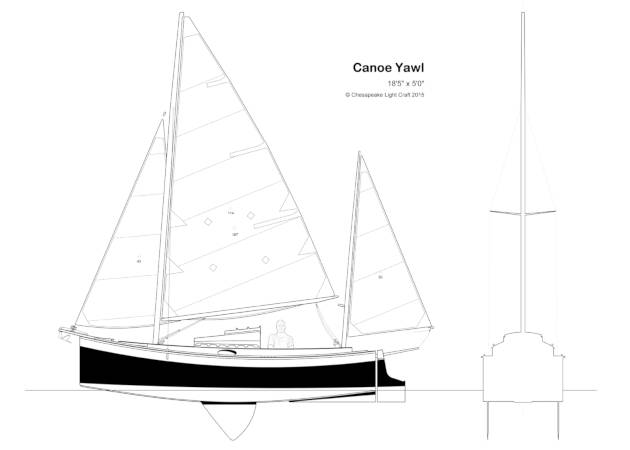
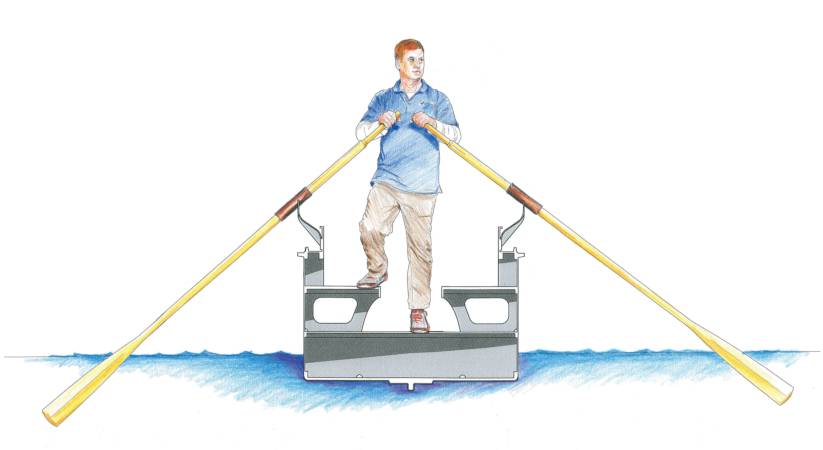
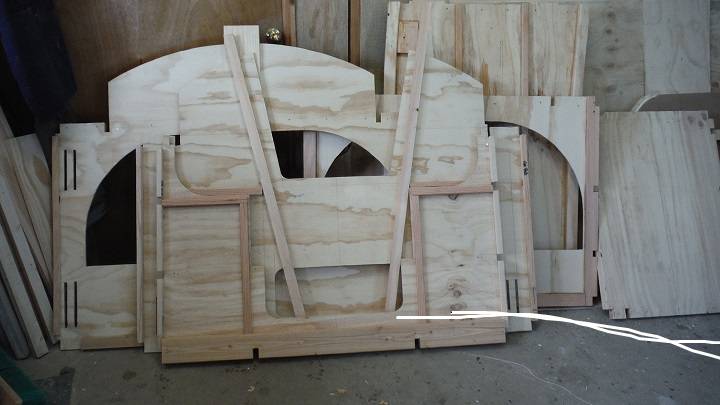
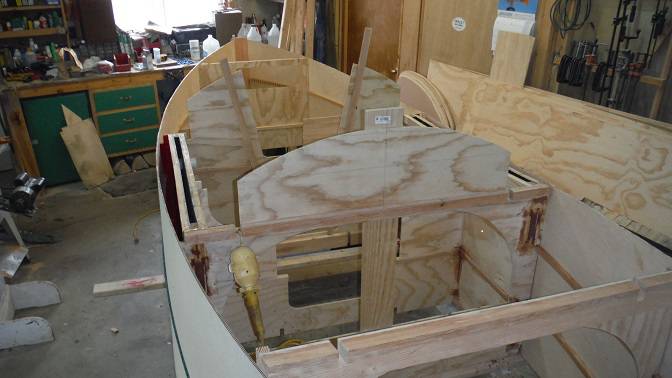
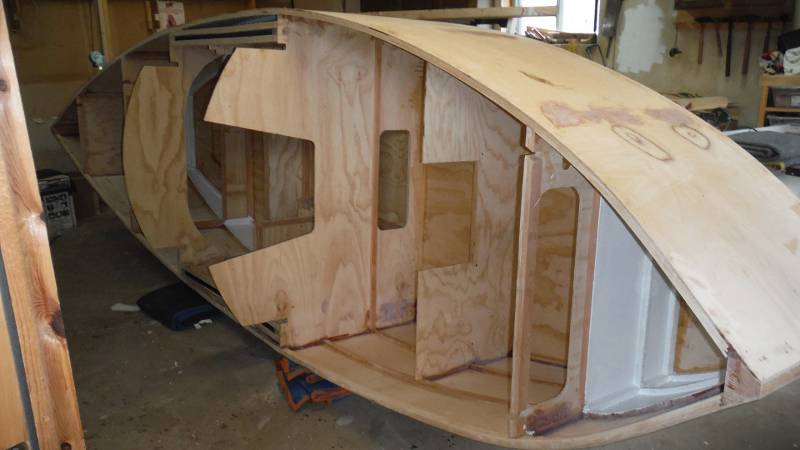
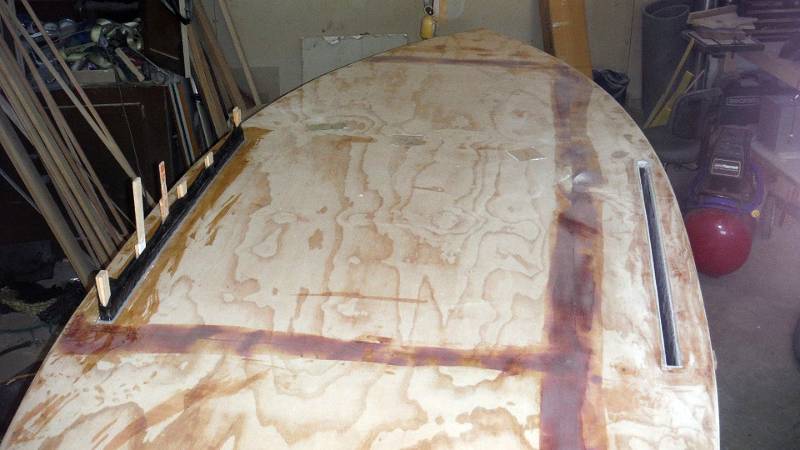
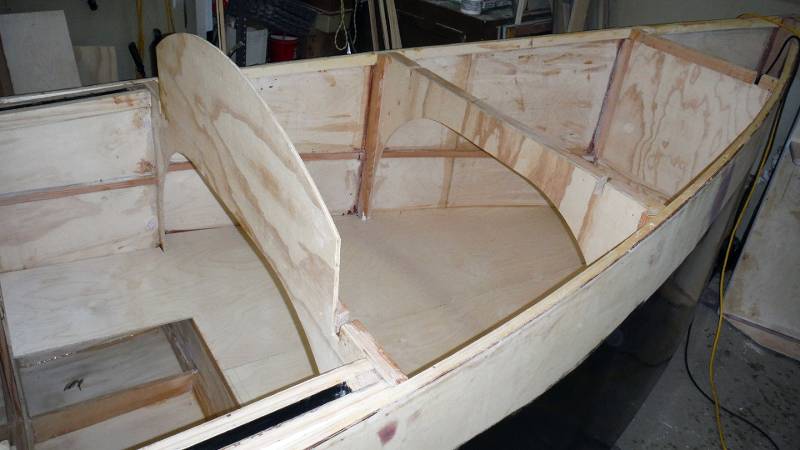
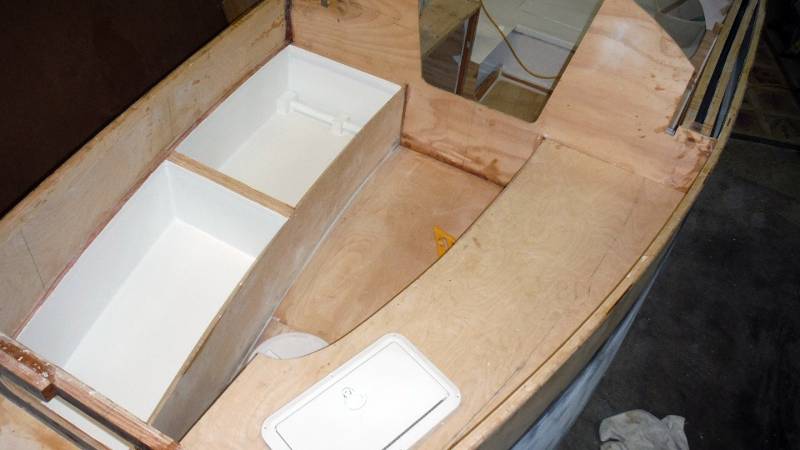
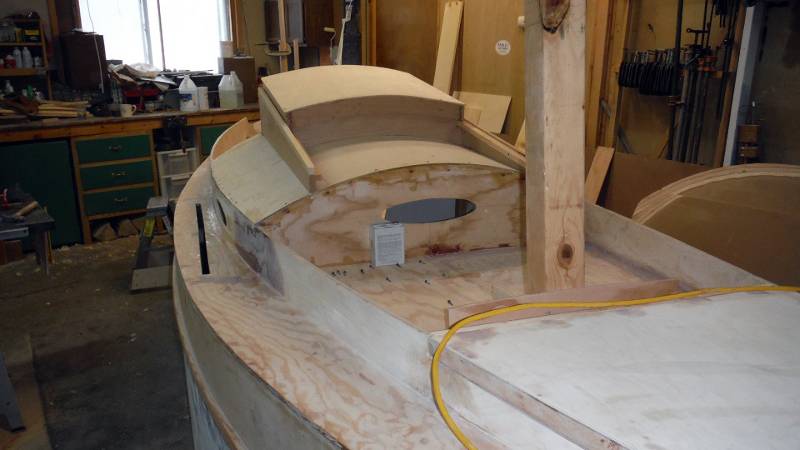
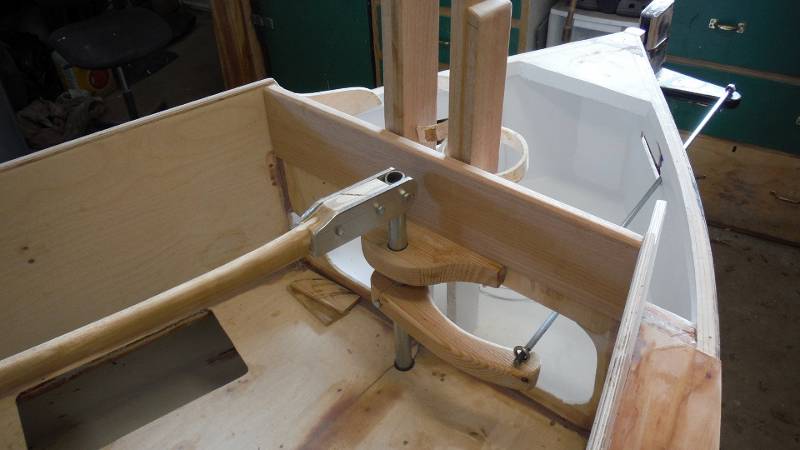
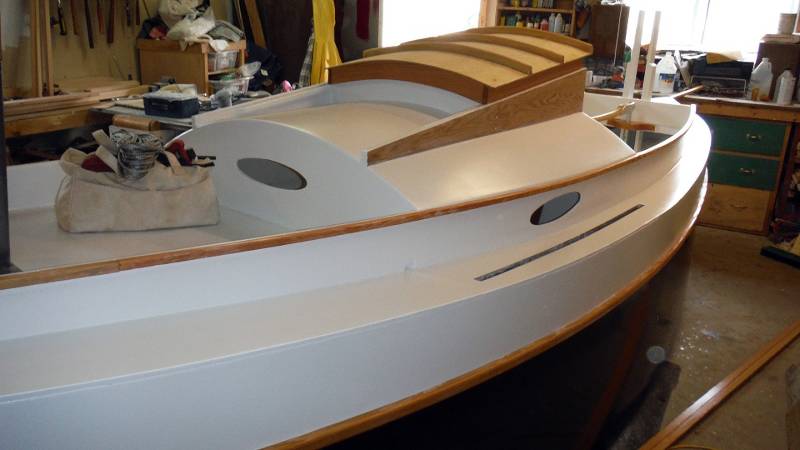
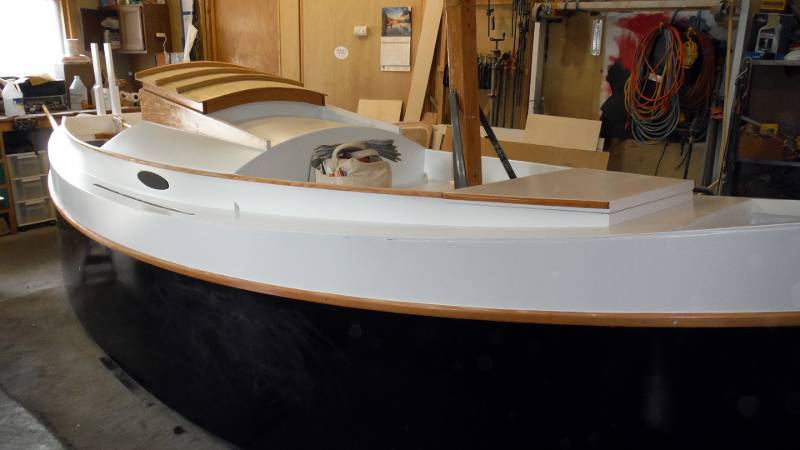
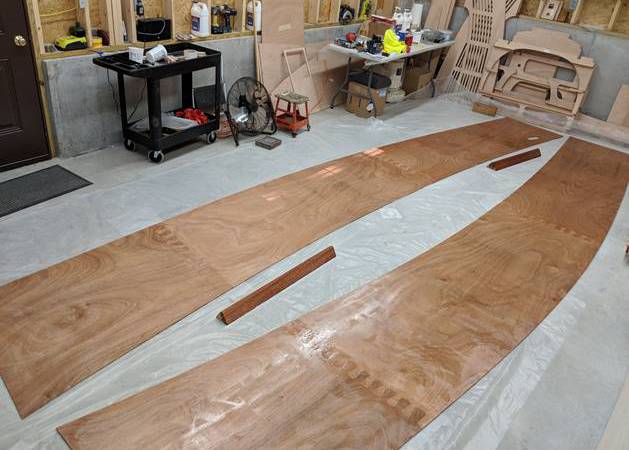
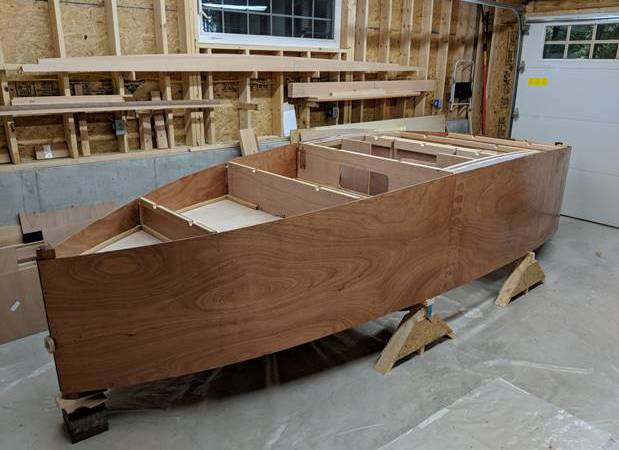
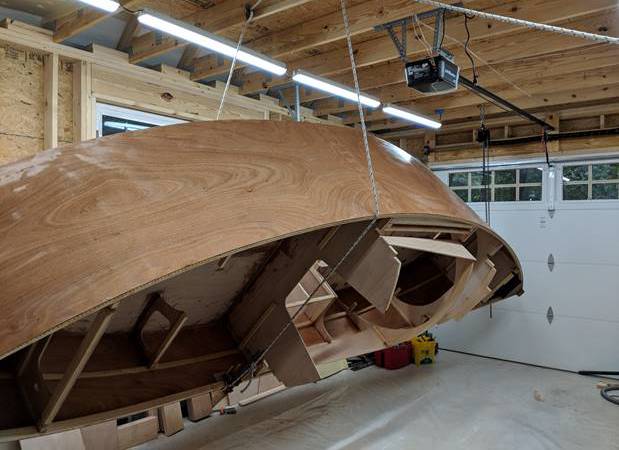
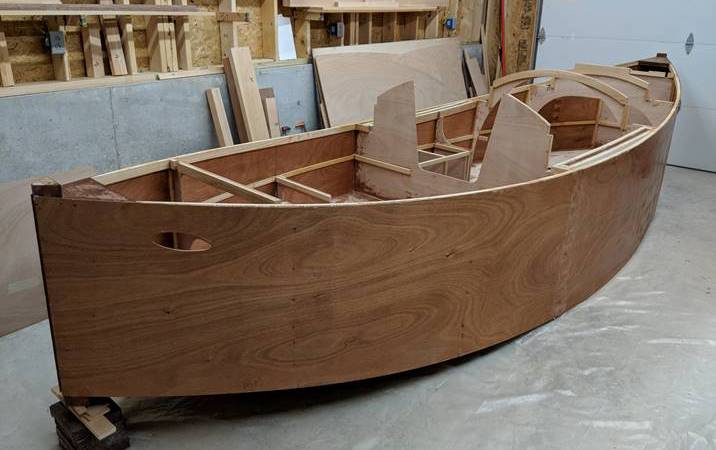
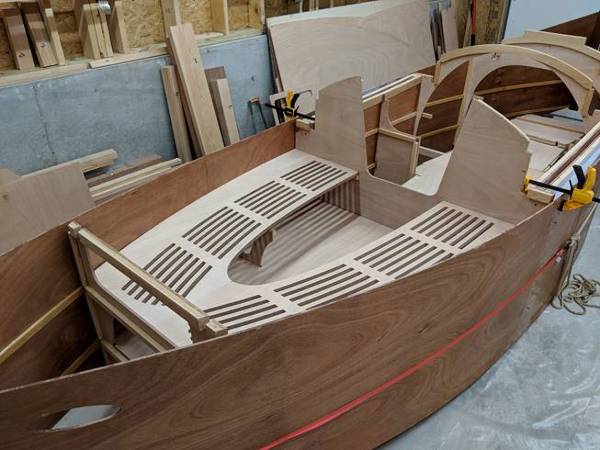
Product Description
A modern wooden canoe yawl for engineless coastal cruising by sail and oars, designed to be affordably built by an amateur.
Canoe Yawls are an elegant and capable class of sailing pocket cruiser that developed on the Humber estuary starting from the 1880s. Founder members of the Humber Yawl Club were canoe enthusiasts who designed these more seaworthy craft to suit the conditions of the estuary. Few of these boats were canoes and most were not yawls, but the term ‘canoe yawl’ became attached to these lovely designs.
The attributes of a good canoe yawl include excellent sailing qualities on all points, the ability to make coastal passages in safety, snug but comfortable accommodation and shoal draught. All of the best examples are engineless, instead relying on sailing efficiency and auxiliary oars to make the next anchorage.
The best-known canoe yawls, such as Albert Strange's Wenda, George Holmes's Eel and Herreshoff's Rozinante, are all really hard for amateurs to build and prohibitively expensive to have built. Philip C. Bolger designed some modern canoe yawls that are intended to be more affordable and easier to build, but are perhaps too simplified.
John Harris of Chesapeake Light Craft, a proponent of engineless cruising and the canoe yawl ethos, designed this modern take on the canoe yawl, Autumn Leaves. His speculative design was featured in WoodenBoat Magazine in the March/April 2016 issue and has generated significant interest, enabling CLC to develop a plywood parts kit for the boat. As of October 2019, at least two completed boats have been launched and two or three others are under construction.
To me, a ‘canoe yawl’ isn't just a design type; it's a self-contained small boat cruising philosophy. According to this philosophy, skilled boatmen (and women) move their little boats along the coastline in all weather, artfully playing wind and tide to make passages without resorting to engines.
John C. Harris, designer
Autumn Leaves is intended to be straightforward and cost-effective for amateur construction, capable of coastal cruising and handy enough under sail that an engine will not be missed. She measures 18′ 5″ long, 60″ wide, draws just 8″ with the twin bilgeboards up and weighs about 1500 lb on the trailer. She'll be easy to tow behind medium-sized cars.
525 pounds of lead ballast beneath the floorboards of Autumn Leaves keeps the easily-driven hull upright and will help her carry momentum in tacking. Even in very light air, this double-ender can coast from puff to puff in a way that will help keep the oars stowed. In the unlikely event of a swamping, the lead ballast is more than offset by foam buoyancy beneath the cockpit, beneath the forward end of the berth and outboard of the bilge board cases.
Like all the traditional canoe yawls, Autumn Leaves has only a small cockpit, but it is unusually ergonomic. The single berth is palatial and the aft end of the berth flips up to make a luxurious seat from which all cooking, eating and contemplation can be achieved. Someone used to travelling light could make themselves at home for weeks at a time. The cabin could probably be rearranged to accommodate two adults, but the boat was designed primarily for singlehanders.
The small self-bailing cockpit is proportioned to allow the skipper to row the boat standing up and facing forward.
To speed up construction and reduce costs, the plywood hull is reinforced with wooden stringers instead of epoxy fillets and fibreglass fabric. A light sheathing of fibreglass is recommended for durability.
Builders undertaking Autumn Leaves should be comfortable reading traditional boat plans and have at their disposal stationary tools such as a tablesaw and a bandsaw. The neatly proportioned coach roof, hatches and cockpit will require a bit of patient boat carpentry. Construction of a scale model would be a great way to get acquainted with the design.
John Harris has written about the design of Autumn Leaves on his blog and followed it up with a sailing report once the first two boats were launched.

We don't currently offer a complete kit for this boat, but the majority of components (plywood, solid wood, epoxy and fibreglass) are available in three separate packages. Tools and consumables can be ordered from our website. We can also supply other parts, such as spars, on request.
Plywood parts kit
This kit comprises all the plywood parts for Autumn Leaves. The parts are CNC-cut from marine-grade okoume plywood and left tabbed-in to the sheets for shipping on a pallet. The acrylic parts for the deadlights are also included.
Solid wood parts
This package contains the high-quality timber parts for the hull, machined to thickness and ready to be cut to fit in the hull assembly. Please note that it does not include the wood to make the spars.
The package includes all solid wood parts to complete the hull, comprising stems, sheer clamps, chine logs, stringers, outwales, breasthooks, bench lips, coaming trim, floorboards, skeg, tiller and numerous other wooden parts.
Fibreglass and epoxy package
This package includes the epoxy resin and woven glass fabric required to build the boat.
Plans
These are the complete plans for building Autumn Leaves, including both the standard version and a lug rigged version with an extended coachroof. The plans comprise 26 sheets sized 11″ × 17″ (280 × 432 mm). All dimensions are shown in both metric and imperial units.
While the level of detail in these plans is very high, builders need to be comfortable reading and working from plans.
PDF plans
This option is to download the complete plans for building Autumn Leaves in PDF format. The plans comprise 17 sheets sized 11″ × 17″ (280 × 432 mm).
After credit card authorisation a download link will be sent to the email address put on the order form.
PDF study plans
These study plans are intended to give you an overview of the construction of the boat. They are in PDF format that can be viewed using Adobe Reader. There are two pages and they measure 279 × 216 mm (11″ × 8½″). They can be printed for carrying around.
After credit card authorisation a download link for the study plans will be sent to the email address put on the order form.

